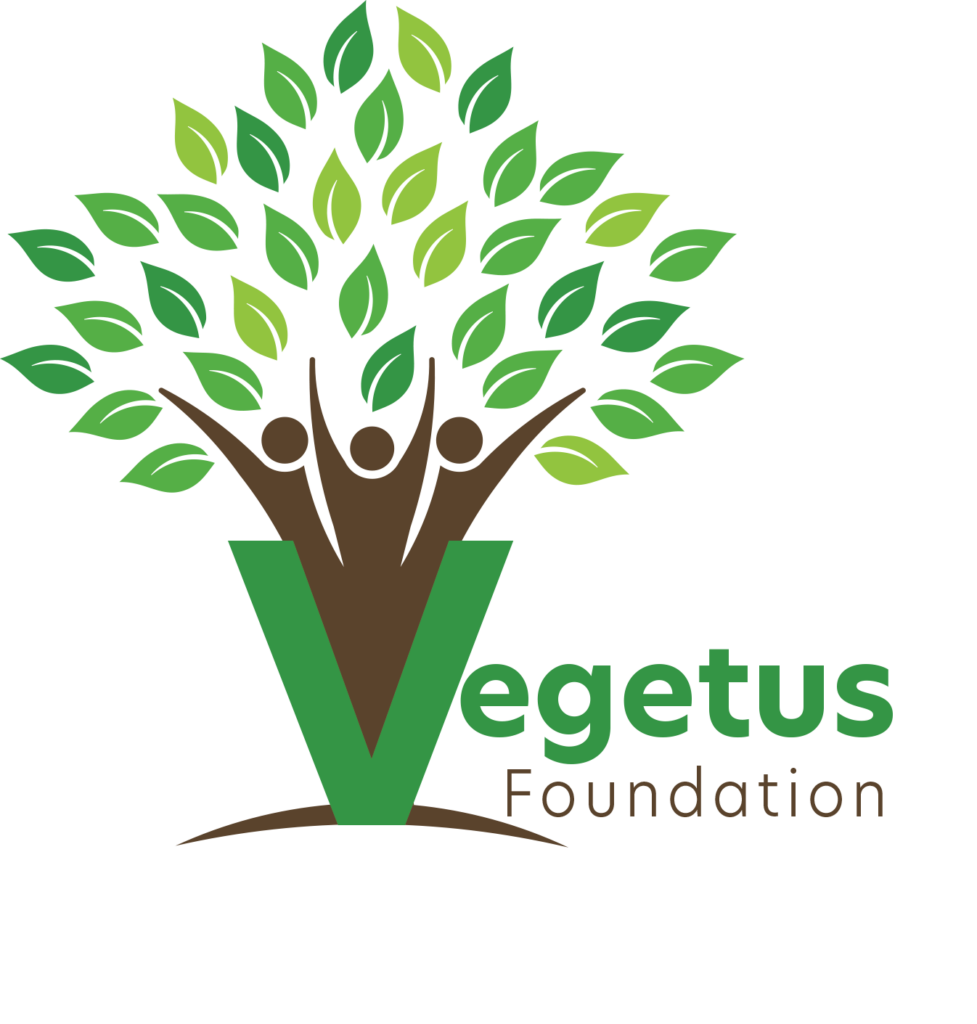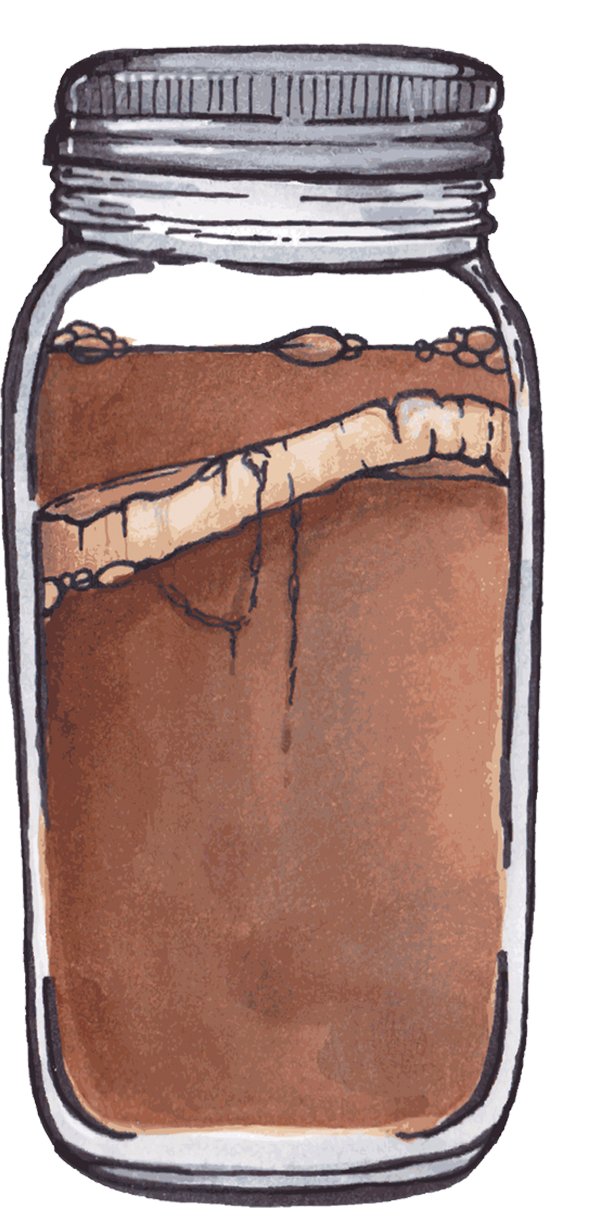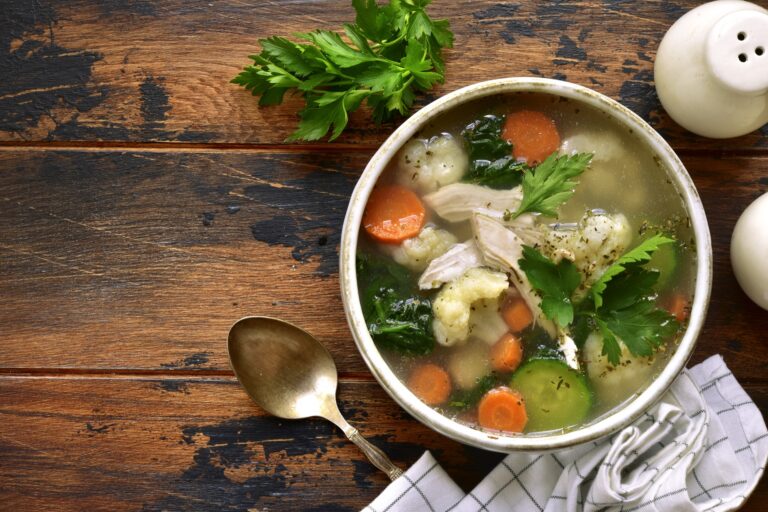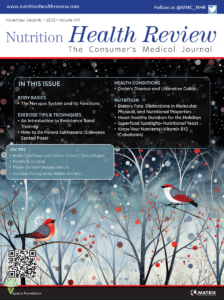
By Sarabeth Lowe, MPH
Ms. Lowe is a Communication Specialist at the University of Delaware Disaster Research Center.
Sound nutrition advice is rarely trendy. Often, the most basic guidelines set the stage for a healthy, long-lasting life. Social media, however, may convince some people to think otherwise. Enter some of the latest diet fads: sea moss, beef tallow, chia seed pudding, raw milk, colostrum supplements, apple cider vinegar detoxes, and charcoal cleanses.1–3
The concept of clean eating has become pervasive in society, especially because of the rise of diet culture on social media. Videos linked to #Diet, #DietTips, and #WhatIEatInADay have become some of the most popular health-related searches on TikTok, boasting more than 36 billion views.1 Countless companies have tapped into this phenomenon by employing influencer marketing to promote their wellness products, a trend that reflects a growing societal emphasis on pursuing healthier lifestyles and making more mindful dietary choices.1–3 It’s all too easy to get lost in a nutrition rabbit hole and become hyperfixated on finding the healthiest diet.1,4
Ironically, this well-intentioned endeavor can be harmful. Such a fixation on food choices can blur the lines between healthy eating and an unhealthy obsession and ultimately spiral into orthorexia, a lesser-known eating disorder characterized by an exaggerated focus on healthy eating and optimal nutrition.4–6 Though it is not officially recognized in the Diagnostic and Statistical Manual of Mental Disorders (DSM-5), this disorder is becoming increasingly acknowledged by the medical and mental health community.5,7–11
With the wellness industry only expected to continue to increase in size and influence, it’s crucial to understand the difference between a mindful, balanced approach to nourishment and a harmful obsession with nutrition.4,9,12,13 Here is what you need to know about orthorexia.
What Is Orthorexia?
American physician and holistic medical practitioner Steve Bratman coined the term “orthorexia” in 1997 to describe patients who were inadvertently harming themselves psychologically through an excessive focus on food—intended to improve health and physical well-being—that led to unintentional malnutrition and/or impairment of daily functioning.4,5,8,14 However, he also identified two stages of this condition. Healthy orthorexia, with an interest in healthy eating with no pathological features, and orthorexia nervosa, with an obsessive focus on healthy eating.4,14 The name is derived from the Greek words orthos and orexis, meaning “correct” and “appetite,” respectively, and the Latin word nervosa, which translates to “nervous” or “pertaining to the nerves.” 4–7,15–17
There is a fine line between eating disorders and disordered eating, and the same applies to the difference between orthorexia and orthorexia nervosa.18,19 In many cases, the latter two begin as a righteous, innocent desire to improve health. Unlike other eating disorders, where the motivation for behaviors often centers around body image, size, and weight, orthorexia places value on the perceived “purity” or “cleanliness” of foods.3–9,16 For example, people with the condition might choose to only eat organic foods or abstain from certain additives, preservatives, or food coloring. When these eating patterns and behaviors spiral into harmful habits and overly-restrictive rules that interfere with daily functioning, they can spiral into orthorexia nervosa. This is a more severe and clinically significant form of the disorder, characterized by intense anxiety, distress, and impairments in daily functioning resulting from extreme dietary restrictions.6–9,14–23
Clean Eating and Other Buzz Words
In the last 30 years, Bratman’s diagnosis has gained more recognition as an informal term to describe a pathological obsession with pure and healthy foods among researchers, health professionals, dietitians, and similar experts.4,10,11,20 At the same time, there has been a noticeable increase in interest in clean eating. Much of this phenomenon can be attributed to social media, which has facilitated the dissemination of dietary trends and fostered a culture that glorifies specific eating patterns and demonizes others.1–3,7,20 These platforms have also become a de facto news and information source for some people, especially among younger generations. Lack of regulation and fact-checking has allowed health misinformation to proliferate more easily, which might also contribute to the pseudoscientific claims around nutrition and clean eating.1–3,7,20,21
The ambiguity of clean eating, which has no scientifically-accepted definition, may have also contributed to the rise of orthorexia. The lack of clarity surrounding this catch-all term, which loosely describes foods that are natural, wholesome, and free from additives, preservatives, and refined and processed ingredients, leaves it open to interpretation.3,20,26 This vagueness means that some people might take their pursuit of wellness too far, allowing their behaviors to progress from healthy orthorexia to orthorexia nervosa.3,5,7,26,27
Prevalence
Research on the prevalence of orthorexia remains limited and inconclusive.20 This is largely due to its exclusion from the Diagnostic and Statistical Manual of Mental Disorders, the handbook used by many health care professionals as the authoritative guide to standardize, classify, and diagnose mental health conditions.5,11,28 Lack of formal diagnostic criteria and a single standardized screening tool makes it exceedingly difficult to get an estimate on precisely how many people have orthorexia and whether it’s a stand-alone eating disorder, like anorexia or bulimia.28
Current estimates of orthorexia range widely. Some studies suggest that 6.9 percent of the general population struggles with this disorder; studies on more specific populations, however, have shown rates as high as 35 to 57.8 percent in high-risk groups.4,23,30–32 There has been conflicting research on whether orthorexia is more common in certain populations. For example, some studies show that rates of the disorder are higher in women than men or vice versa. Others find that rates are comparable among both genders as well as age and body mass index.23 However, a growing body of research points to one likely trend: rates of orthorexia will continue to rise.30–34
Risk Factors
Disordered eating and eating disorders do not discriminate; they can affect anyone regardless of health history, gender, age, socioeconomic status, and cultural background. Research on the exact causes of orthorexia nervosa is limited, but studies suggest that a combination of factors are at play.4–8,20,23
- Biological. Having an individual or family history of dieting, body dissatisfaction, disordered eating, or type I diabetes can contribute to a higher likelihood of developing orthorexia.6
- Individual. People with certain personality traits, such as perfectionism, a tendency toward obsessive-compulsive behaviors, and high levels of neuroticism and need for control, may be more prone to engage in rigid and extreme dietary behaviors.20,23,33–38
- Psychological. People who experience high stress, anxiety, or dissatisfaction with other aspects of their lives may be more likely to develop orthorexia.20,39 People with eating disorders often seek a sense of confidence, empowerment, and mastery when they feel anxious, and having strict rules around food can create the illusion of dietary control.4
- Cultural. Exposure to the media’s portrayal of “clean eating” trends, which can fan the flames of fear of “toxic” foods and perpetuate the pursuit of restrictive and narrow dietary choices, has been linked to higher rates of orthorexia.6,20,23,33–40 Societal norms that prioritize physical appearance and equate health with dietary purity have been shown to have a similar effect.20 Some research shows that rates of orthorexia are increasing in Western societies with a strong emphasis on health and nutrition.20,39
- Social. Having a higher income and access to “clean” foods are associated with orthorexia-related behaviors.6,20,33–38 A similar trend has been seen in those who experienced bullying, especially if it related to weight or body image.6,35 Some studies have shown that people working in health and other related fields, such as nutrition, dietetics, kinesiology, and biology, are more prone to developing orthorexia nervosa.39
Signs and Symptoms
The most common sign of orthorexia nervosa is an obsession with healthy eating. It is characterized by a set of stringent rules around food that need to be meticulously followed to support what a person considers a healthy lifestyle. For people with orthorexia, violating these rules—which can be unrealistic and unsustainable to begin with—or deviating from their eating regiment causes severe emotional distress.4–9,20,23,29 This cause-and-effect pattern is severe enough that it affects a person’s sense of self-worth and interferes with everyday life.
While there is no official diagnostic for orthorexia nervosa, the following are some common signs of this disorder.3,5–9,20,23,29,30–33
- Increased concern about the healthfulness of ingredients and intense fear of “unhealthy” foods
- Compulsive checking of ingredient lists and nutritional labels
- Fixating on preventing or curing disease with food or “clean eating”
- Only consuming foods that are considered “healthy” or “pure” and experiencing high levels of distress when those “safe” foods are unavailable
- Avoiding or eliminating foods that are highly processed, treated with pesticides, genetically modified, contain additives/preservatives, or have excessive amounts of fat, sugar, or salt
- Cutting out certain food groups without medical, religious, cultural, or ethical reasons for doing so
- Engaging in severely restrictive practices, such as cleanses, fasting, or eating only raw foods
- Inability to deviate from a specific eating style or dietary regimen without feeling extreme anxiety
- Unusual interest in the health of what others are eating or having an unusual interest in or excessively critical view of other people’s eating habits
- Having an outside sense of pride in their health and eating habits
- Spending an inordinate amount of time planning, buying, and preparing meals, often avoiding those served at social gatherings or public venues
In addition to its effect on psychological and social well-being, orthorexia can have a detrimental effect on the body. The dietary rules, restrictions, and compulsive behaviors that occur alongside the condition can lead to several physical health problems, including nutrient deficiencies, malnutrition, extreme weight loss, osteoporosis, and weakened immune function.4–10,20,23,40
Safety and Prevention
If you or someone you know becomes preoccupied with clean eating, feels guilt surrounding food choices, or routinely engages in restrictive diets, take action.8 There are several steps you can take to mitigate and prevent those behaviors from developing into orthorexia nervosa.
Knowledge is power. Like all eating disorders, awareness of the risk factors and warning signs of orthorexia nervosa is important in recognizing, preventing, and treating it.20 Early intervention is crucial.3–9,15,20,29,40 The National Eating Disorder Association provides a screening tool on their website that has been used more than 100,000 times in the last year and vetted by experts.4,42
Outsmart the algorithm. Be mindful of the content and accounts you interact with. Visually-based social media platforms, such as Instagram, Pinterest, and TikTok, have been linked to orthorexia nervosa tendencies.1,2,34 This is especially true for those highly involved with health and fitness accounts.43 Filter who and what you follow. Use social media platforms’ “suggested posts” function to curate and diversify the content on your feed.4,44
Resist labeling. Be mindful of the language you use to describe food. More specifically, avoid labeling food as “good” or “bad.” Food holds no moral value, and using value-laden language to describe certain products as inherently good or bad or healthy or unhealthy can lead to disordered eating and feelings of shame and guilt.45
Dig deep. Eating disorders and disordered eating behaviors do not happen in a vacuum. They are complex illnesses with close connections to substance abuse, trauma, obesity, and other mental health conditions, such as depression, anxiety, and obsessive-compulsive disorder.46 Diets that turn into obsessions may serve as a strategy to avoid facing other issues.47 Be proactive and meet with a therapist to explore and pin down what might be causing orthorexic behaviors. Addressing those underlying issues will pave the way to developing better coping mechanisms.
Bottom Line
Trying to “get it right” when it comes to nutrition can feel tempting. However, a relentless pursuit of a healthy diet can be more harmful than helpful and make you feel like you’re constantly missing the mark.8 Nailing down the perfect diet and sustaining it is extremely difficult, if it is possible at all. This can lead to disordered eating patterns and spiral into orthorexia nervosa.
Though this condition lacks formal diagnostic criteria and consensus among experts, it is no less debilitating than other eating disorders. It is a tricky illness to recognize. “Clean eating” is a laudable and socially accepted goal, one that many people aspire to achieve. With rates of orthorexia expected to rise alongside the influence of diet culture, it is more important than ever to be wary of letting good intentions go too far.13,30–34
Sources
- Munro E, Wells G, Paciente R, et al. Diet culture on tiktok: a descriptive content analysis. Public Health Nutr. 2024;27(1):e169.
- Zeng M, Grgurevic J, Diyab R, et al. #WhatIEatinaDay: the quality, accuracy, and engagement of nutrition content on Tiktok. Nutrients. 2025;17(5):781.
- Ambwani S, Sellinger G, Rose KL, et al. “It’s healthy because it’s natural.” Perceptions of “clean” eating among U.S. adolescents and Emerging adults. Nutrients. 2020;12(6):1708.
- McHugh A. Extreme ‘clean’ eating can tip healthy eaters into a danger zone. Washington Post. 2 Mar 2025. Accessed 4 Mar 2025.https://www.washingtonpost.com/wellness/2025/03/02/orthorexia-clean-eating-obsession-perfectionism/
- Dunn TM, Bratman S. On orthorexia nervosa: a review of the literature and proposed diagnostic criteria. Eat Behav. 2016;21:11–17.
- National Alliance for Eating Disorders. How to better understand the confusing, counterintuitive world of orthorexia. Updated 6 Feb 2023. Accessed 4 Mar 2025. https://www.allianceforeatingdisorders.com/how-to-better-understand-the-confusing-counterintuitive-world-of-orthorexia/
- Scarff JR. Orthorexia nervosa: an obsession with healthy eating. Fed Pract. 2017;34(6):36–39.
- Davidson K. Orthorexia nervosa: signs, symptoms, and treatment of a misunderstood eating disorder. Healthline. Updated 3 Mar 2022. Accessed 4 Mar 2025. https://www.healthline.com/nutrition/orthorexia-nervosa-101
- What is orthorexia? When healthy eating becomes harmful. The Emily Project. 6 Jul 2023. Accessed 4 Mar 2025. https://emilyprogram.com/blog/what-is-orthorexia/
- Walker-Swanton FE, Hay P, Conti JE. Perceived need for treatment associated with orthorexia nervosa symptoms. Eat Behav. 2020;38:101415.
- Strahler J, Stark R. Perspective: classifying orthorexia nervosa as a new mental illness-much discussion, little evidence. Adv Nutr. 2020;11(4):784–789.
- Derrick J. The wrong influence: the link between diet culture and eating disorder. HopeHealth. 28 Feb 2025. Accessed 14 Mar 2025. https://www.hope-health.org/2025/02/28/the-wrong-influence-the-link-between-diet-culture-and-eating-disorder/
- Callaghan S, Doner H, Medalsy J, et al. The trends defining the $1.8 trillion global wellness market in 2024. McKinsey Insights. 16 Jan 2024. Accessed 14 Mar 2025. https://www.mckinsey.com/industries/consumer-packaged-goods/our-insights/the-trends-defining-the-1-point-8-trillion-dollar-global-wellness-market-in-2024
- Bratman S. Orthorexia vs. Theories of healthy eating. Eat Weight Disord. 2017;22(3):381-385.
- Dell’Osso L, Abelli M, Carpita B, et al. Historical evolution of the concept of anorexia nervosa and relationships with orthorexia nervosa, autism, and obsessive-compulsive spectrum. Neuropsychiatr Dis Treat. 2016;12:1651–1660.
- Right Path Counseling. Why is anorexia called anorexia “nervosa?” 22 Aug 2023. Accessed 14 Mar 2025. https://rightpathcounselingli.com/why-is-anorexia-called-anorexia-nervosa
- Gull WW. Anorexia nervosa (apepsia hysterica, anorexia hysterica). 1868. Obes Res. 1997;5(5):498-502.
- Dennis AB. What is the difference between disordered eating and eating disorders? National Eating Disorder Association. Accessed 18 Mar 2025. https://www.nationaleatingdisorders.org/what-is-the-difference-between-disordered-eating-and-eating-disorders/
- Fuller K. The difference between disordered eating and eating disorders. VeryWellMind. Updated 29 Jul 2024. Accessed 18 Mar 2025. https://www.verywellmind.com/difference-between-disordered-eating-and-eating-disorders-5184548
- Horovitz O, Argyrides M. Orthorexia and orthorexia nervosa: a comprehensive examination of prevalence, risk factors, diagnosis, and treatment. Nutrients. 2023;15(17):3851.
- Bernard AP. Nutrition advice is rife with misinformation − a medical education specialist explains how to tell valid health information from pseudoscience. The Conversation. 28 Jan 2025. Accessed 28 Mar 2025. https://theconversation.com/nutrition-advice-is-rife-with-misinformation-a-medical-education-specialist-explains-how-to-tell-valid-health-information-from-pseudoscience-246478
- Zickgraf HF, Barrada JR. Orthorexia nervosa vs. healthy orthorexia: relationships with disordered eating, eating behavior, and healthy lifestyle choices. Eat Weight Disord. 2022;27(4):1313–1325.
- Koven NS, Abry AW. The clinical basis of orthorexia nervosa: emerging perspectives. Neuropsychiatr Dis Treat. 2015;11:385–394.
- Wilson B. Why we fell for cleaning eating. The Guardian. 11 Aug 2017. Accessed 28 Mar 2025. https://www.theguardian.com/lifeandstyle/2017/aug/11/why-we-fell-for-clean-eating
- Pilař L, Stanislavská LK, Kvasnička R, et al. Healthy Food on instagram social network: vegan, homemade and clean eating. Nutrients. 2021;13(6):1991.
- DeSoto L. Clean eating: what does the research say? MedicalNewsToday. 4 Nov 2024. Accessed 30 Mar 2025. https://www.medicalnewstoday.com/articles/clean-eating-what-does-the-research-say
- Allen M, Dickinson KM, Prichard I. The dirt on clean eating: a cross sectional analysis of dietary intake, restrained eating and opinions about clean eating among women. Nutrients. 2018;10(9):1266.
- American Psychiatric Association. About DSM-5-TR. Accessed 30 Mar 2025. https://www.psychiatry.org/psychiatrists/practice/dsm/about-dsm
- Dennis AB. What is orthorexia? National Eating Disorder Association. Accessed 31 Mar 2025. https://www.nationaleatingdisorders.org/orthorexia/
- López-Gil JF, Tárraga-López PJ, Soledad Hershey M, et al. Overall proportion of orthorexia nervosa symptoms: a systematic review and meta-analysis including 30 ,476 individuals from 18 countries. J Glob Health. 2023;13:04087.
- Donini LM, Marsili D, Graziani MP, et al. Orthorexia nervosa: a preliminary study with a proposal for diagnosis and an attempt to measure the dimension of the phenomenon. Eat Weight Disord. 2004;9(2):151–157.
- Ramacciotti CE, Perrone P, Coli E, et al. Orthorexia nervosa in the general population: a preliminary screening using a self-administered questionnaire (ORTO-15). Eat Weight Disord. 2011;16(2):e127–e130.
- Łucka I, Mazur A, Łucka A, et al. Orthorexia as an eating disorder spectrum-a review of the literature. Nutrients. 2024;16(19):3304.
- Usta Ulutaş P, Okan Bakır B. The type of social media is a greater influential factor for orthorexia nervosa than the duration: a cross-sectional study. BMC Public Health. 2025;25(1):827.
- Roncero M, Barrada JR, García-Soriano G, et al. Personality profile in orthorexia nervosa and healthy orthorexia. Front Psychol. 2021;12:710604.
- Barnes MA, Caltabiano ML. The interrelationship between orthorexia nervosa, perfectionism, body image and attachment style. Eat Weight Disord. 2017;22(1):177–184.
- Novara C, Pardini S, Visioli F, et al. Orthorexia nervosa and dieting an a non-clinical sample: a prospective study. Eat Weight Disord. 2022;27(6):2081–2093.
- McComb SE, Mills JS. Orthorexia nervosa: a review of psychosocial risk factors. Appetite. 2019;140:50–75.
- Yau YH, Potenza MN. Stress and eating behaviors. Minerva Endocrinol. 2013;38(3):255–267.
- Niedzielski A, Kaźmierczak-Wojtaś N. Prevalence of orthorexia nervosa and its diagnostic tools-a literature review. Int J Environ Res Public Health. 2021;18(10):5488.
- Agopyan A, Kenger EB, Kermen S, et al. The relationship between orthorexia nervosa and body composition in female students of the nutrition and dietetics department. Eat Weight Disord. 2019;24(2):257–266.
- National Eating Disorder Association. Eating Disorders Screening Tool. https://www.nationaleatingdisorders.org/screening-tool/
- Scheiber R, Diehl S, Karmasin M. Socio-cultural power of social media on orthorexia nervosa: an empirical investigation on the mediating role of thin-ideal and muscular internalization, appearance comparison, and body dissatisfaction. Appetite. 2023;185:106522.
- Yurchuck L, Elliott R, Nangia S, et al. Learning how to “turn off” triggering content in news and social media. within health. 19 Jan 2023. Accessed 31 Mar 2025.https://withinhealth.com/learn/within-summit-series/turn-off-triggering-content
- Within Health. Why we should avoid labeling food as good or bad. Updated 21 Apr 2022. Accessed 31 Mar 2025. https://withinhealth.com/learn/articles/why-we-should-avoid-labeling-food-as-good-or-bad
- National Eating Disorder Association. Get the facts on eating disorders – infographics. Accessed 31 Mar 2025. https://www.nationaleatingdisorders.org/get-facts-eating-disorders-infographics/





